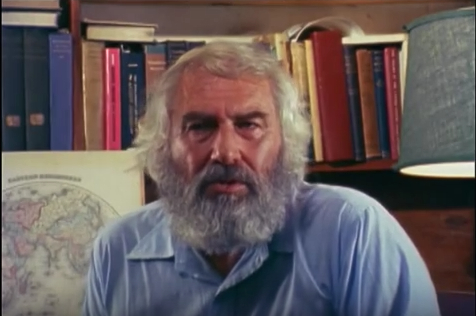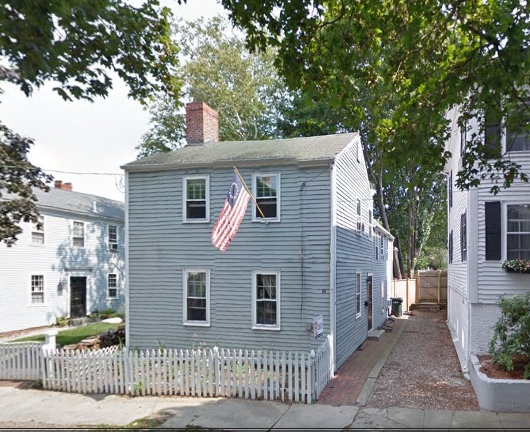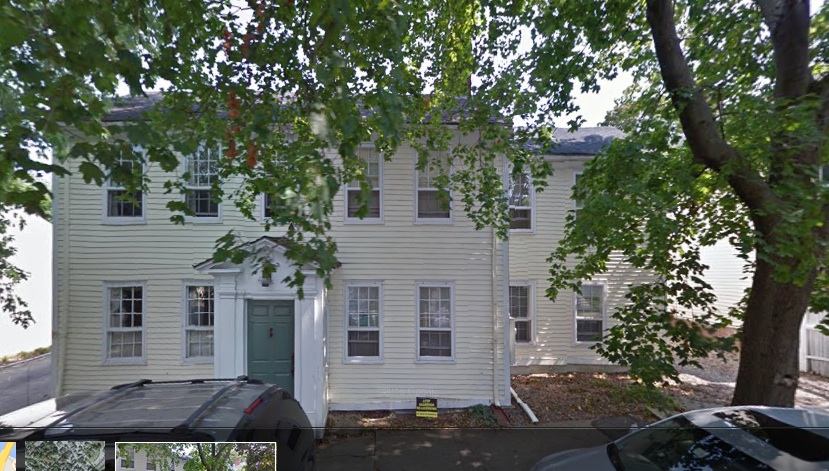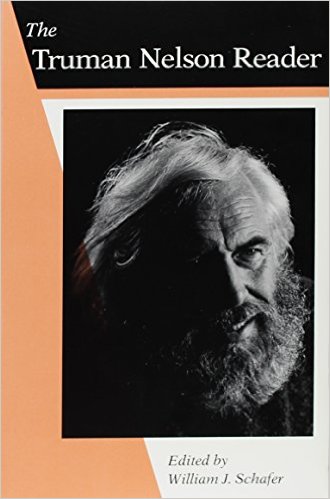On one of the Facebook Newburyport groups Dick Sullivan (former City Councilor and mayoral candidate) mentioned that Truman Nelson had played a big part in the restoration of Newburyport during Urban Renewal.
My response was that I did not have a clue who Truman Nelson was. Another member of the group said that he was on the video about Newburyport, “A Measure of Change.”

Truman Nelson from “A Measure of Change”
This is Truman Nelson, the photo is from “A Measure of Change.” I’ve seen that video a ton of times and had never questioned who in the world he was.
And it’s hard to find out information on Truman Nelson. Going to Salem Deeds Online, Mr. Nelson owned 2 homes in Newburyport on Olive Street, 23 Olive and 15-17 Olive, both bought back in 1966, before Urban Renewal. Dick Sullivan remembers Mr. Nelson’s family at 23 Olive and Tom Kolterjahn remembers going to Mr. Nelson’s house at 15-17 Olive to talk about how to renovate the old homes in Newburyport that people were working on.

23 Olive Street, Newburyport, MA, Google Maps
23 Olive Street is described as, “One of the oldest homes in Newburyport; built 1699. Five working fireplaces,wide pine board floors, gunstock corners, beautiful moldings and trim. Full bath up half bath down.” The information is from Zillow.

15-17 Olive Street, Newburyport MA, Google Maps
15-17 Olive Street is the John Burrill House, c 1790, There is a write up on the Massachusetts Historic Commission, as well as on the Historic Surveys on the City of Newburyport’s website.
And in my hunt to find out exactly who Truman Nelson was, I found this writeup on Amazon, The Truman Nelson Reader:
“Truman Nelson (1911-1987) was a self-educated novelist, essayist, lecturer, and social activist. He never finished high school and supported himself in his early years as a factory worker, labor organizer, actor, and playwright. Encouraged by F. O. Matthiessen, he turned to writing and in 1952 published his first historical novel, The Sin of the Prophet, a study of Theodore Parker and the Anthony Burns case. That book earned him his picture on the cover of Saturday Review and designation as the magazine’s “Writer of the Year.” Two novels soon followed: The Passion by the Brook (1953), on George Ripley and the communal movement at Brook Farm, and The Surveyor (1960), on John Brown’s abolition efforts in Kansas. These three novels established Nelson as a major writer on the history of American radical thought. His later essays and polemical writings were influential in the civil rights movement of the 1960s, when Nelson traveled, taught, lectured, and acted in the front lines of the struggle for racial equality.
In recent years, Nelson has been neglected by scholars, critics, and the general public, and many of his writings have been allowed to go out of print. The Truman Nelson Reader is intended to restore his voice and to prompt a reevaluation of his work. The collection brings together excerpts from Nelson’s published novels, selected essays, and a portion of his last, as yet unpublished, novel on John Humphrey Noyes, founder of the Oneida Colony. Also included are essays on William Lloyd Garrison, Henry David Thoreau, John Brown, and W.E.B. Du Bois, as well as selections from the 1960s: “The Torture of Mothers,” written after the first Harlem riots; “The Right of Revolution,” reportedly found on Ho Chi Minh’s desk at the time of his death; and “The Conscience of the North,” a meditation on Theodore Parker’s meaning for the civil rights movement.”

The Truman Nelson Reader
And I found this reference to Truman Nelson on Martin Nicolaus’s website, where he refers to Mr. Nelson’s preserving his colonial-era home in Newburyport:
“One of the speakers at the Town Hall rally after the Cuba trip was Truman Nelson. He was a high school dropout who worked in General Electric factories until he was 40, but meanwhile educated himself during long hours in public libraries and began writing fiction. His first book, The Sin of the Prophet, was published by Little, Brown; it told the story of the abolitionist intellectual Theodore Parker. When I met him, Nelson had recently finished The Surveyor, a novel about John Brown and the Harper’s Ferry raid. He was fiercely interested in Cuba and was a strong supporter of Robert F. Williams. He had just bought a colonial-era house in Newburyport, a short drive from Boston, and was busy removing generations of old paint to reveal the beautiful old woodwork underneath.”